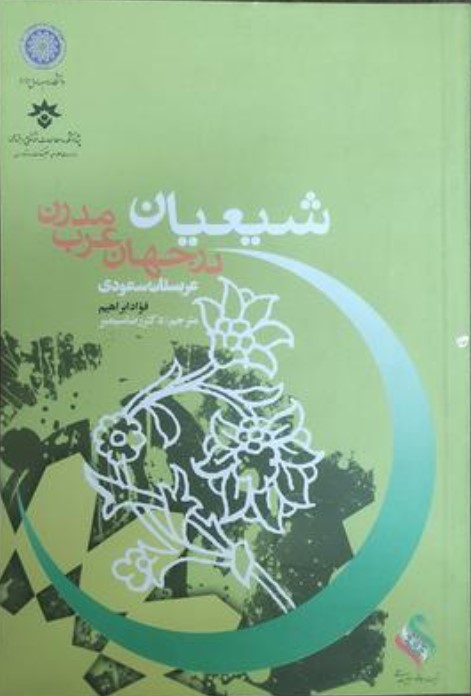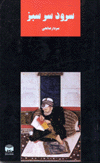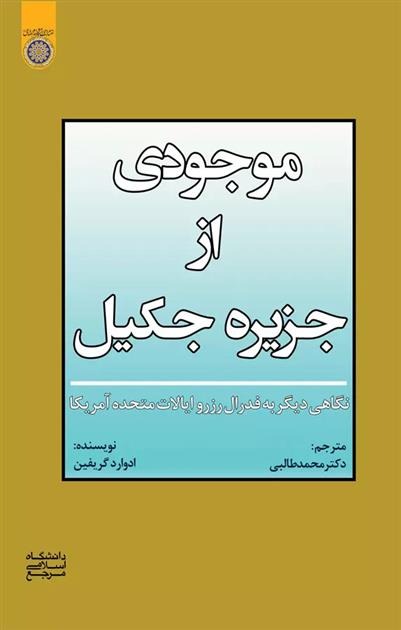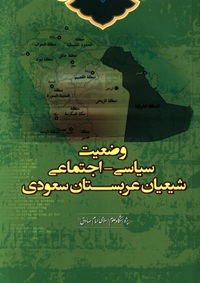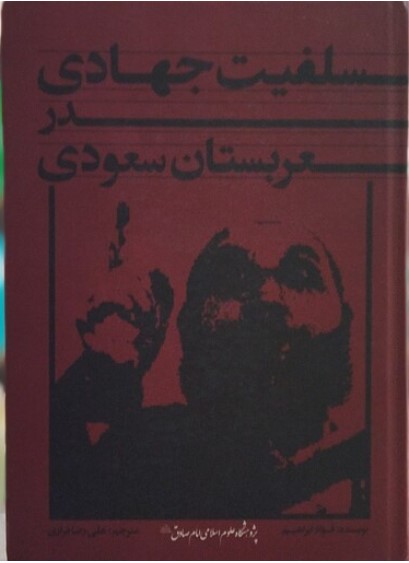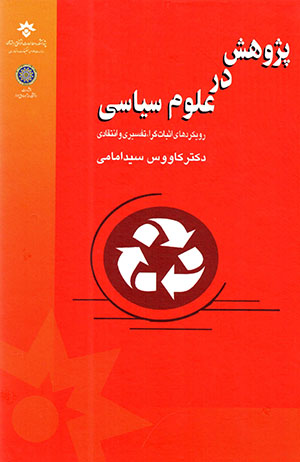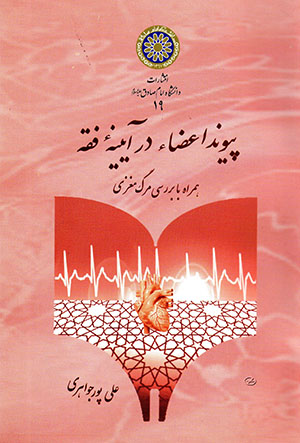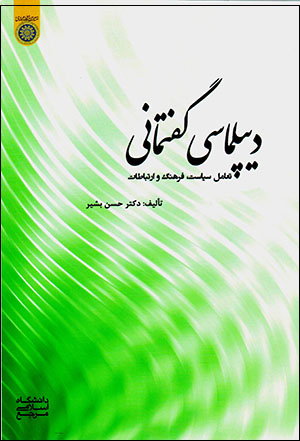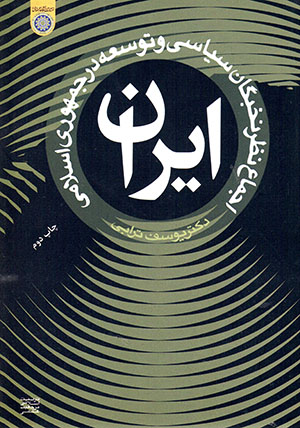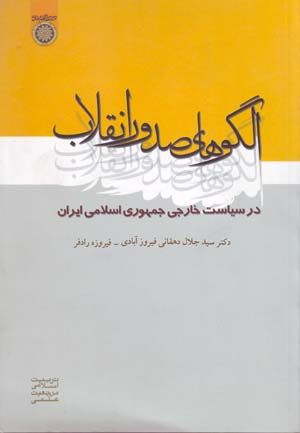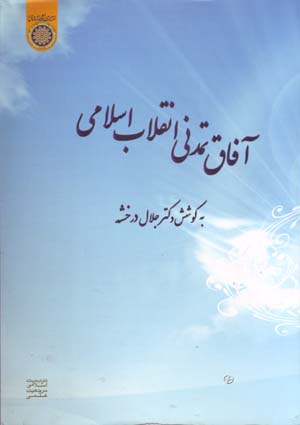Shī'ayān dar Jahān-i 'Arab-i Mudirn ('Arabistān-i Sa'udī): Persiska (Farsi) 2008
شیعیان در جهان عرب مدرن (عربستان سعودی)
21,25 $
Dela
Wishlist
Originaltitel:
الشیعه فیالسعودیه
ISBN:
9789647746809
Översättare:
Riz̤a Sīmbur
Förlag:
Danishgah-i Imam Sadiq
Åldersgrupp:
Vuxen
Sidor:
404
Vikt:
350 g
Produktmått:
14 x 21 x 3
,
7 cm
Bokomslag:
Pocketbok
The above book tries to study and analyze the evolution of the political and intellectual issues of the Shia opposition group living in the Eastern Province of Saudi Arabia since 1975. This study also emphasizes the Shia religious opposition (Islamic Revolution Organization, or the Reform Movement) that was founded in 1975. This book is arranged in seven chapters. The first chapter titled "Shiites in the Eastern Province under Saudi rule" deals with the general analysis of the political, economic, geographical and demographic influences of Shiites. This chapter also examines the government's discriminatory policies against Shia communities. Therefore, the first chapter presents the complexities of Shia relations with the Saudi government during the past two hundred years, which of course also emphasizes the contemporary era. The second chapter is related to Shiite identity in Eastern province. In this chapter, the author talks about how identity is formed and the causes and factors of identity creation. Also, the author is trying to investigate how Shiites prefer some over others among their different identities, and more importantly, what are the tendencies against the government among Shiites? In the third chapter entitled "Emergence of the Shiite Islamic Movement (1960-1979)", it emphasizes the political and intellectual atmosphere in which MVM grew and started its organizational activities, its goals and literature. In this chapter, primary and fundamental symbols such as the Islamic Ummah, the establishment of Sharia laws and the Islamic state, jihad and social protest, Islam and ignorance, etc., which are generally discussed in Islamic movements, have been examined and studied. The fourth chapter, under the title "Revolutionary Decade" (1979-1989), explains the characteristics, discourses and goals of the leaders of the Shiite movement in the Eastern Province in November 1979. The Intifada movement is considered a fundamental change in the Shiite opposition and its effect on the intellectual flow and classification of this opposition is very important. The fifth chapter under the title "From revolutionary options to reformist options (1989-1993)" presents the issues that initially occurred with the transformation of the discourse to the amendment in 1990. In this chapter, it has been tried to have an opinion on the strategy and discourse of the amendment. The sixth chapter titled "1993 Treaty" presents a detailed study of the treaty between the Saudi government and the leaders of the reform movement, which was concluded in September 1993. The first question that is answered in this chapter is whether these talks were legal from the religious point of view of the Shiites. What were the terms and results of the agreement and how did the Shiites and the national government react to the successes and failures of this agreement? Also, in this chapter, the motivations of the Saudi government for opening a direct dialogue with the Shiite opposition are explained. And finally, what were the results and promises of it. Did the Saawi government remain committed to its promises to the leaders of the amendment and how the leaders of the amendment viewed their negotiations with the government. The seventh chapter presents a central idea; It means compromise and complete trends since 1993. In this chapter, the author has examined how the reform movement balanced its political and intellectual discourse after returning to the country and how the Saudi government responded to their fundamental demands. Also, in this chapter, a comparison of the strategies of the Saudi government against the Shiites and other groups, both religious and secular, has been discussed in order to determine how the government deals with its internal rivals and whether the government uses a single method against its fellow groups. Regardless of the region, whether it adopts ethnic and religious orientation, it acts differently.
more
کتاب فوق سعی می کند تا تکامل مباحث سیاسی و فکری گروه اپوزیسیون شیعی ساکن در استان شرقی عربستان سعودی از سال 1975 را مورد مطالعه و بررسی قرار دهد. همچنین در این مطالعه بر اپوزیسیون مذهبی شیعی (سازمان انقلاب اسلامی، یا جنبش اصلاحیه) تأکید شده است که در سال 1975 تأسیس شد. این کتاب در هفت فصل تنظیم شده است. فصل اول با عنوان «شیعیان در استان شرقی و تحت حاکمیت سعودی»، به بررسی کلی تأثیرگذاری های سیاسی، اقتصادی، جغرافیای و جمعیتی شیعیان می پردازد. این فصل همچنین به بررسی سیاستهای تبعیض آمیز دولت درباره جوامع شیعه پرداخته شده است. بنابراین فصل اول ارایه کننده پیچیدگی های روابط شیعیان با دولت سعودی در خلال دویست سال گذشته است که البته به دوران معاصر نیز تأکید می نماید. فصل دوم، در ارتباط با هویت شیعه در استان شرقی است. نویسنده در این فصل در مورد چگونگی شکل گیری هویت و علل و عوامل خلق هویت سخن می گوید. همچنین نویسنده درصدد است تا بررسی کند که چگونه شیعیان در میان هویتهای مختلف خود، برای برخی در مقابل برخی دیگر ترجیح قائلند و نکته مهمتر اینکه گرایشهای مخالف حکومت در میان شیعیان چیست؟ در فصل سوم با عنوان «ظهور جنبش اسلامی شیعه (1979-1960)» بر روی جو سیاسی و فکری که در آن MVM رشد پیدا نمود و فعالیت های سازمانی خود را آغاز کرد، اهداف و ادبیات آن تأکید می کند. در این فصل نمادهای اولیه و بنیادینی مانند امت اسلامی، وضع قوانین شریعت و دولت اسلامی و جهاد و اعتراض اجتماعی، اسلام و جاهلیت و غیره که در جنبش های اسلامی عموماً مورد بحث قرار می گیرند، مورد بررسی و مطالعه قرار گرفته است. فصل چهارم، تحت عنوان «دهه انقلابی» (1989-1979) به توضیح شرایط ویژگی ها، گفتمانها و اهداف رهبران جنبش شیعه در استان شرقی در نوامبر 1979 می پردازد. جنبش انتفاضه، تغییری بنیادین در اپوزیسیون شیعه محسوب می شود و تأثیر آن بر جریان فکری و دسته بندی به این اپوزیسیون بسیار حائز اهمیت است. فصل پنجم تحت عنوان «از گزینه های انقلابی تا گزینه اصلاح طلبانه (1993-1989)» ارایه کننده مسایلی است که در ابتدا با تحول گفتمان به اصلاحیه در سال 1990 اتفاق افتاد. در این فصل سعی شده است که به راهبرد و گفتمان اصلاحیه، نظری داشته باشد. فصل ششم با عنوان «معاهده 1993» ارایه کننده مطالعه دقیق از معاهده بین دولت سعودی و رهبران جنبش اصلاحیه است که در سپتامبر 1993 منعقد شد. اولین سؤالی که در این فصل به آن پاسخ داده شده است این است که آیا از دیدگاه مذهبی شیعیان، این گفتگوها جنبه قانونی داشت؟ شرایط و نتایج توافق چه بود و چگونه شیعیان و دولت ملی به موفقیت ها و ناکامی های این توافق واکنش نشان دادند؟ همچنین در این فصل انگیزه های دولت سعودی برای گشایش دیالوگ مستقیم با اپوزیسون شیعه توضیح داده شده است. و اینکه نهایتاً نتایج و وعده های آن چه بود. آیا دولت سعوی به وعده های خود در قبال رهبران اصلاحیه متعهد ماند و اینکه رهبران اصلاحیه چگونه به مذاکرات خود به دولت می نگریستند. فصل هفتم ارایه کننده یک ایده مرکزی است؛ یعنی سازش و گرایشهای متکامل از سال 1993 تاکنون. در این فصل نویسنده به بررسی این موضوع پرداخته است که چگونه حرکت اصلاحیه گفتمان سیاسی و فکری خود را پس از بازگشت به کشور تعادل بخشید و چگونه دولت سعودی به تقاضاهای بنیادین آنان پاسخ گفت. همچنین در این فصل به مقایسه راهبردهای دولت سعودی در مقابل شیعیان و همچنین سایر گروه ها، چه مذهبی و چه سکولار پرداخته شده است تا مشخص شود چگونه دولت با رقبای داخلی خود برخورد می کند و اینکه آیا دولت روش واحدی را در مقابل هم گروه ها، صرف نظر از منطقه، گرایش قومی و مذهبی اتخاذ می کند یا نه، متفاوت عمل می کند.
more

